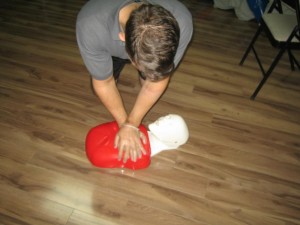https://www.youtube.com/watch?v=Dsvtzwp4nG8
Third-degree burns look like deep wounds and appear to be very dark or extremely white, yellow or brown. These burns are considered major burns and they can be fatal when not properly treated. The burn damages the outer layer of the skin (epidermis) and the entire layer beneath it (dermis). Symptoms include little or no pain because the nerves and tissue on the skin are damaged. It can be lessened and treated with simple first-aid steps, otherwise it becomes more susceptible to potential complications like infection.
The material posted on this page on third degree burns is for learning purposes only. To learn to recognize and manage first, second and third degree burns register for a first aid course with one of our Canadian training providers.
What can you do to prevent and manage a third degree burn
A burn is a form of injury to body tissues which is caused by dry heat (fire), scald (steam or hot liquids), radiation, friction, sunburns, electricity and chemicals. Burns can be very painful and depending on the severity of the injury, it may affect body surface areas like fat, muscle, and bone. It is important to observe for fluid accumulation on the injured skin and to check the victims vitals when the injury involves the chest and areas where the vital organs are located. It is best to get a tetanus shot immediately and have the burn properly treated at a clinic or hospital.
The victim may be in shock if the burn is caused by electricity or if the airway is blocked due to the inhalation of smoke from burning objects. When this occurs, you may need to administer immediate aid, including CPR if the victim is not breathing. Do not attempt to take off any clothing that is stuck to the burned skin. Instead, cover it with a cool and wet sterile bandage or clean cloth.
Immediate medical attention is needed when the injury involves larger areas on the face, hands, genitals, buttocks, chest and thigh. Children under the age of four and adults over the age 60 have a higher risk of complications. Diabetics should get medical attention as soon as possible.
Swelling caused by a third degree burn

Swelling of the burned area is common and it may result in the tightening of the blood vessels and difficulty in moving the affected body parts. Clean the area with a cool running water. Do not apply ice as it may result in the constriction of the small blood vessels located in the swollen area. This can lead to a condition called ischemia where there is inadequate blood supply that can cause further tissue damage.
Reference:
Children’s Hospital in Wisconsin. Third degree burns. Retrieved on June 3, 2014 from http://www.chw.org/medical-care/burn-program/burn-treatments/classification-and-treatment-of-burns/third-degree-burns/

